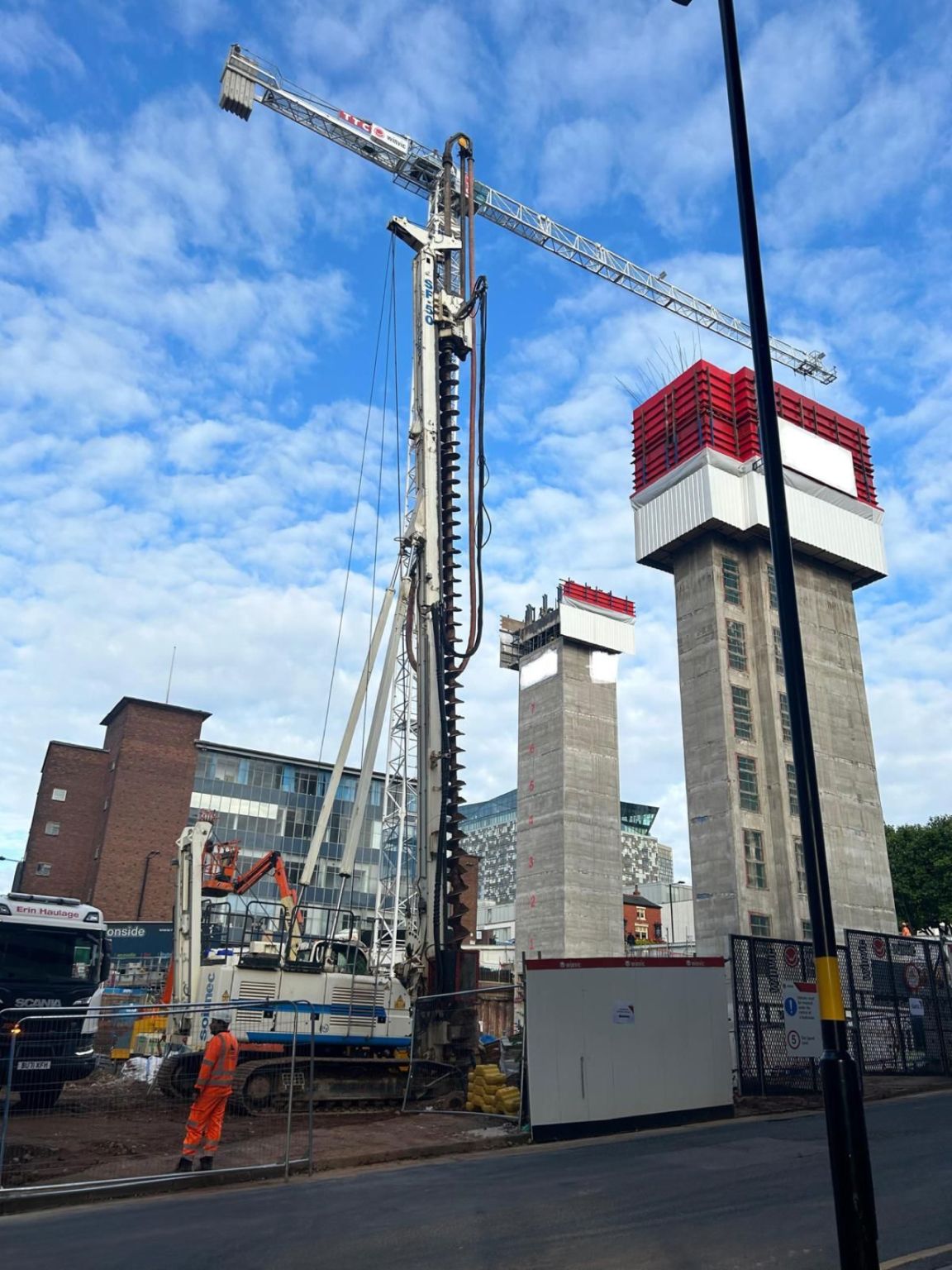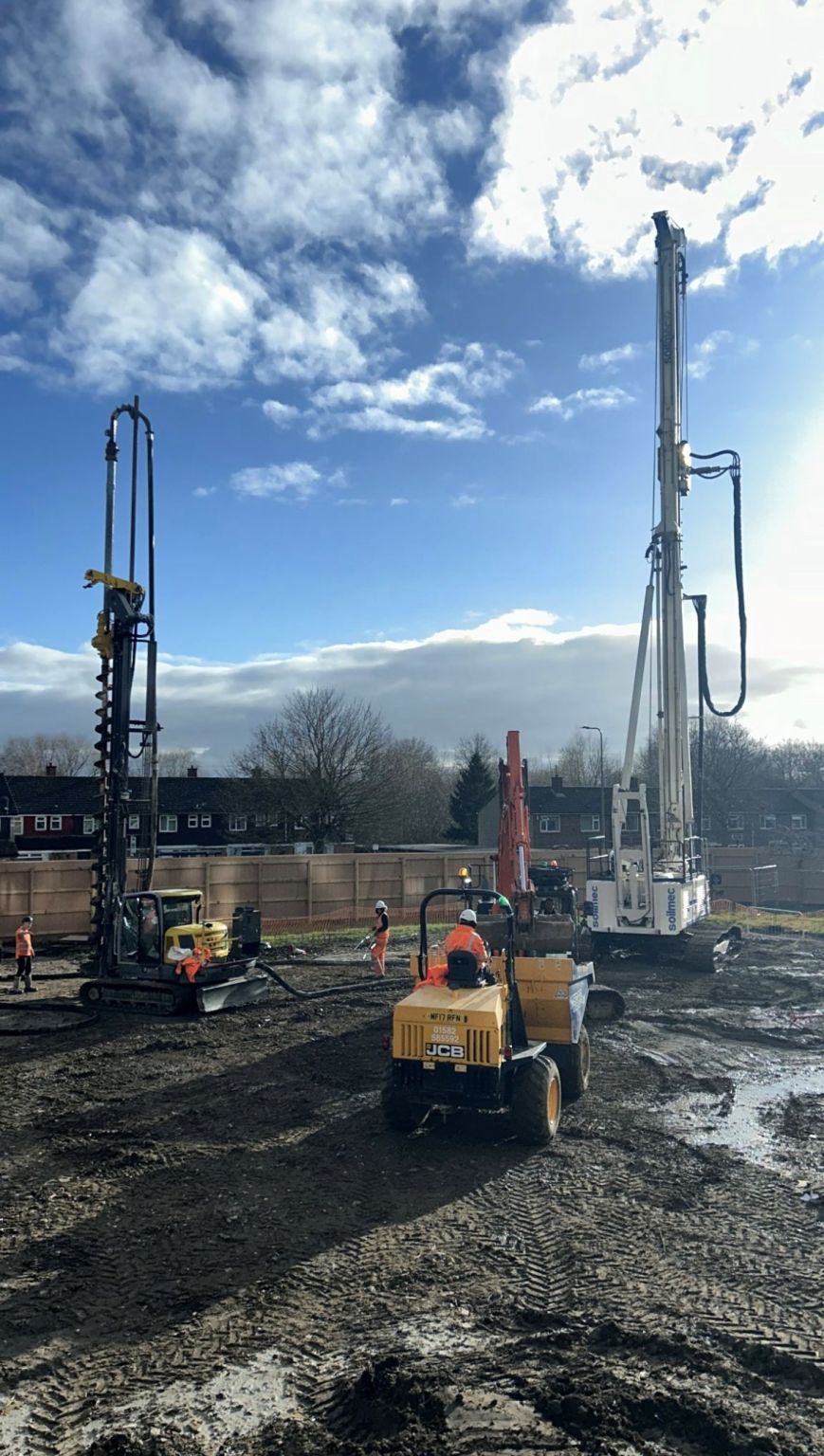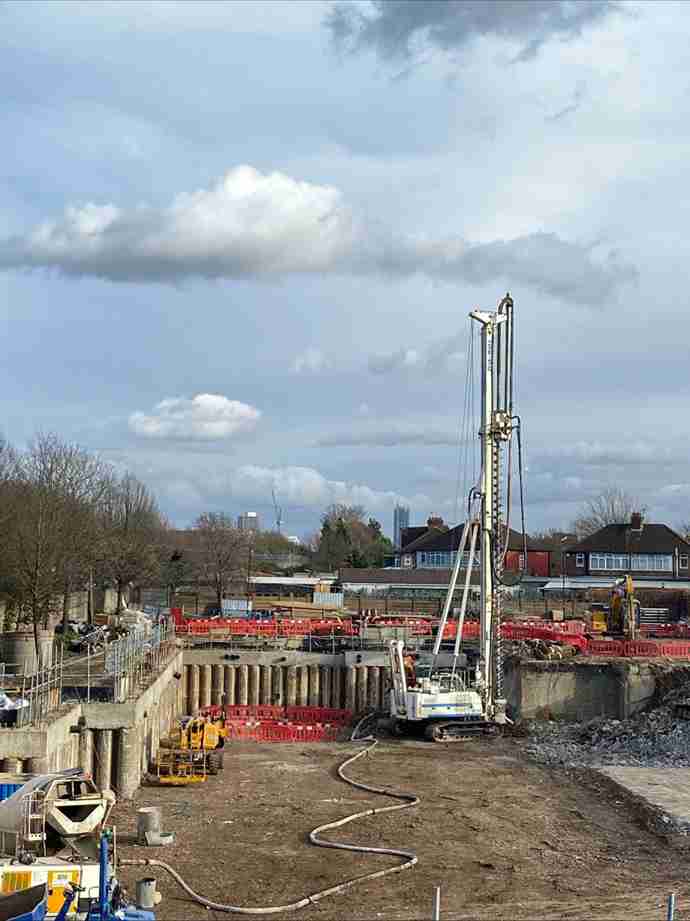Difference Between CFA Piles and Driven Piles

The CFA piles (Continuous Flight Auger) and driven piles are among the most widely used pile types, accommodating various applications from domestic to commercial.
CFA piles are capable of achieving overall adaptability to irregular site topography. At the same time, driven piles, made from precast concrete or steel, are fast and easy to install and provide for a highly efficient structural system.
Even though each type of drilling component has some differentiation that applies to different structures, they are still a requirement for an organisation with a particular mission.
What are CFA piles?
The CFA piles use hollow stemed helical shaft to drill a borehole up to the design depth and fill it with concrete while retreating the auger. The steel cage is then added to the freshly poured concrete to provide tensile strenght. In this way, a pile is cast in a single continuous process, thus known as continuous flight auger, or CFA piles.
CFA piles can be used in different building projects and are a practical and sound method of anchoring, depending on the particular ground conditions. This method has a strong edge in urban environments where its main advantages are negligible disturbance, soundless emission of vibration, and silent operation.
Mon–Fri: 8:00am-6:00pm
Skilled Labour
Customer Satisfaction
Advanced Machines
What are the Common Uses of CFA piling?
There are several uses for CFA piles, including:
- Foundation Support: By efficiently dispersing loads into the earth, CFA piles offer sturdy support for buildings and other structures.
- Retaining Walls: They are used in the construction of retaining walls in order to stabilise slopes and stop soil erosion.
- Bridge Construction: To ensure structural stability, CFA piles act as dependable foundations for bridge abutments.
- High-Rise Buildings: To support huge vertical loads during high-rise construction, CFA piles are frequently used in metropolitan settings.
- Infrastructure Projects: They provide a solid foundation for major improvements and are essential to a number of infrastructure projects, including those involving roads, trains, and airports.
What are the Pros and Cons of the CFA piling?
Advantages
- CFA is ideal for areas near existing buildings or urban construction sites due to its ability to minimise noise and vibration.
- CFA piles offer versatility, as they can be applied to various soil types such as sands, clays, and certain types of rock.
- The procedure is faster than other piling techniques. It offers a range of auger sizes to create heaps suitable for the project’s requirements.
- It is simple to modify the piles’ depth during construction to suit the project’s particular needs.
- CFA piles can withstand significant tension loads due to the installation of reinforcement cages before concrete sets.
Drawbacks
- CFA piles are adaptable but may not be suitable for very soft soils or specific types of loose ground.
- Extra precautions, such as steel casings, may be necessary when working on sandy soil beneath the water table to prevent borehole collapse.
- Sand leaks could lead to excessively dry concrete and complicate the reinforcing installation process during concrete curing.
- The project’s size may necessitate a significant volume of construction traffic for the delivery of supplies and debris clearance.
What is the cost of piling foundation?
The majority of household additions cost between £5k and £10k, depending on the specific needs of the job. In the UK, CFA piles may cost between £150 and £300 per linear metre as of 2024.
What are Driven piles?
Driven piles made out of either concrete or steel are pretreated into the ground by using advanced hydraulic hammers or other techniques.
Driven piles referred to as displacement piles, are a popular type of building foundation that sustain structures by shifting the weight of the foundation to strata of rock or soil with adequate bearing capacity and appropriate settling characteristics.
What are the Common Uses of Driven piling?
There are several uses for Driven piles, including:
- Gives infrastructure and structures structural support.
- Provides support and stability in regions vulnerable to soil mobility.
- Used to build foundations in a variety of soil types, such as rocky, clayey, or sandy soils.
- Perfect for construction projects like bridges or high-rise buildings that need deep foundations.
- Frequently used in offshore constructions, piers, and port construction.


What are the Pros and Cons of Driven piling?
Advantages
- Driven piles are a sturdy base for structures, especially in regions with difficult soil conditions or large loads.
- Driven piling offers flexibility in building projects as it can be adjusted to various soil types and ground conditions.
- Driven piling is cost-effective, making it a more cost-effective option for smaller projects and softer soil conditions compared to alternatives like bored piling.
- Driven piling provides quicker installation times, accelerating construction timelines and reducing project durations.
- Driven pile installation is suitable for locations near delicate structures or in urban areas due to its minimal noise and vibration production.
Drawbacks
- Driving piles into the earth can cause significant noise and vibrations, potentially disrupting nearby homes or buildings.
- Due to depth restrictions, driven piling may not be suitable for areas with hard rock, deeper obstructions, or unusually deep foundations.
- Excessive force or poorly driven piles can damage structures, potentially leading to costly corrections or replacements.
- Access to required equipment can be challenging, particularly in rural or densely populated areas, making it difficult to reach the building site.
What is the Cost of Driven Piling?
Ideally, this traditional method of piling is mostly used in the ground with a high water table and pollutants. The power of these vibrations is used to beat or drive the piles deep into the ground during the building process. Driven piles can cost anything from £159 and £300. Yet again, an approximation, there might be costs accruing.
CFA Piles VS Driven Piles
Aspect | CFA Piles | Driven Piles |
Construction Method | The unit name reflects its fast installation process, which involves drilling and concreting in a single, combined process. | Driven Piles installation involves the use of prefabricated concrete or steel piles that are driven into the ground forcibly. |
Soil Conditions | Appropriate for a variety of soil types, such as clays, stony sands, and specific kinds of rock. | Adaptable to different soil types and working on soil’s hardness. |
Common Uses |
|
|
Pros |
|
|
Cons |
|
|
Final Discussion
Driven piles and CFA piles are suitable for deep foundations, but they differ in ground conditions and installation methods. CFA piles are ideal for city pavements due to low vibrations, quick installation, and adaptability to soil. Driven piles are suitable for smaller, affordable projects, but they come with environmental risks and may not be suitable for all construction projects.
